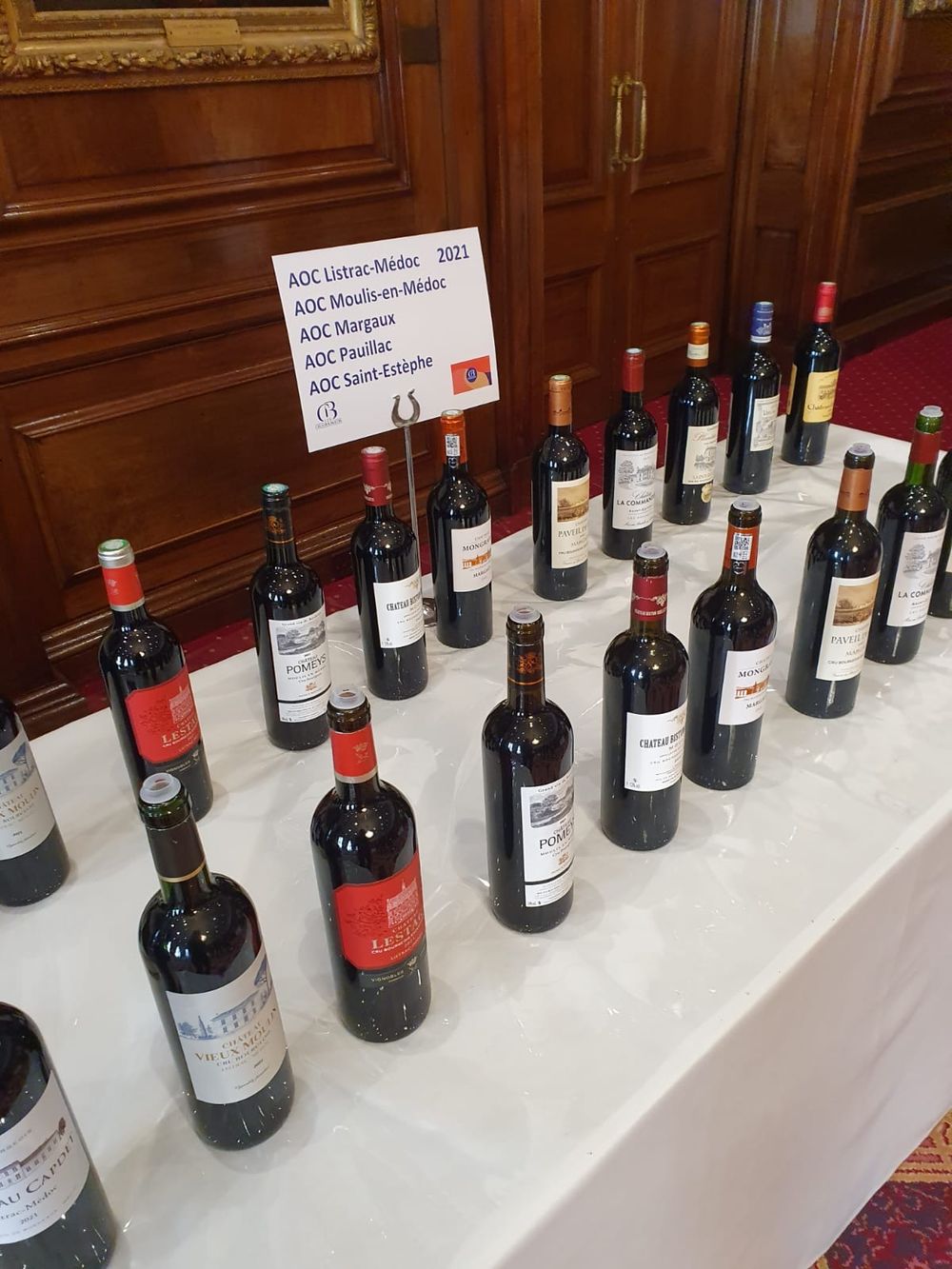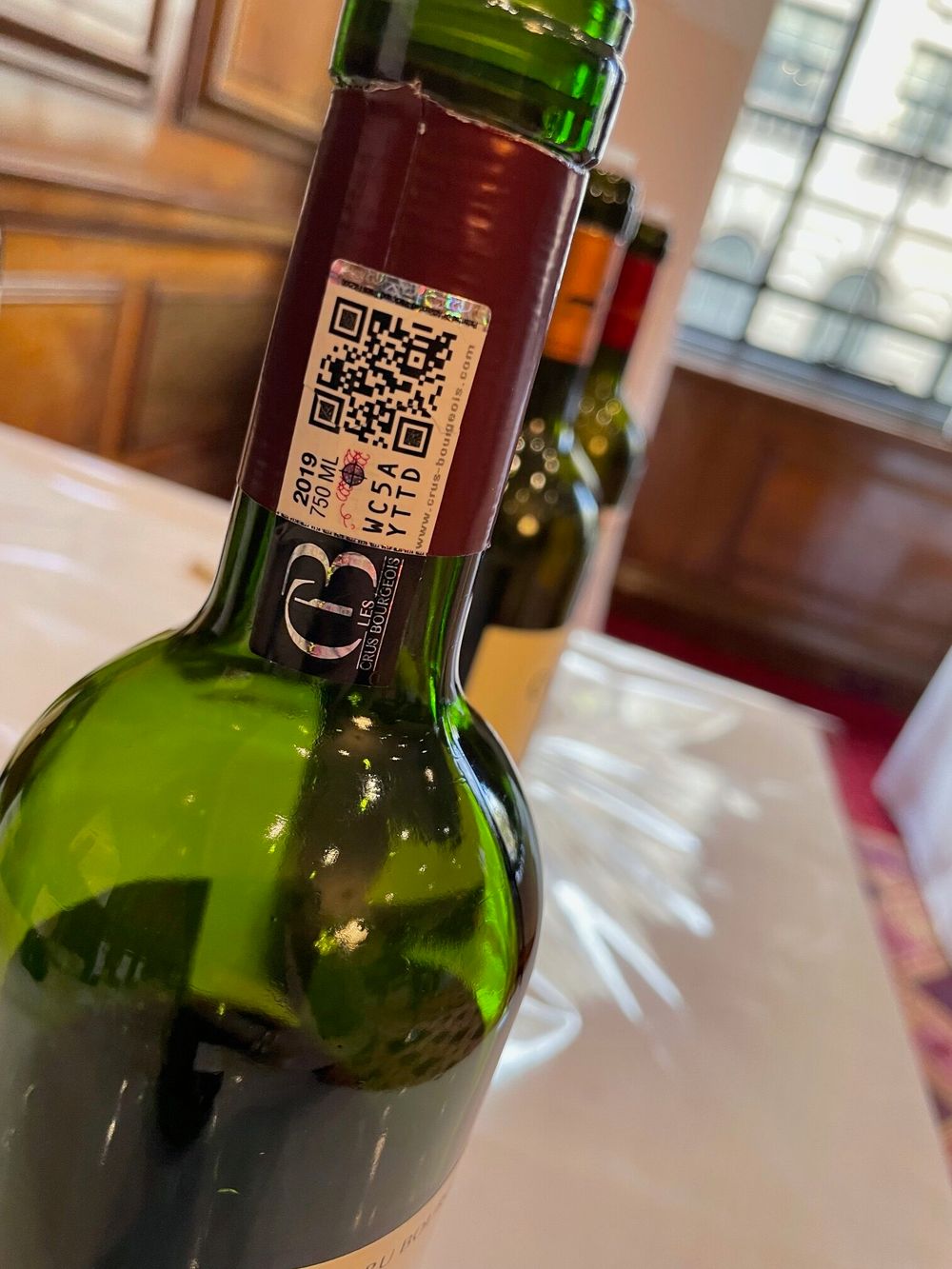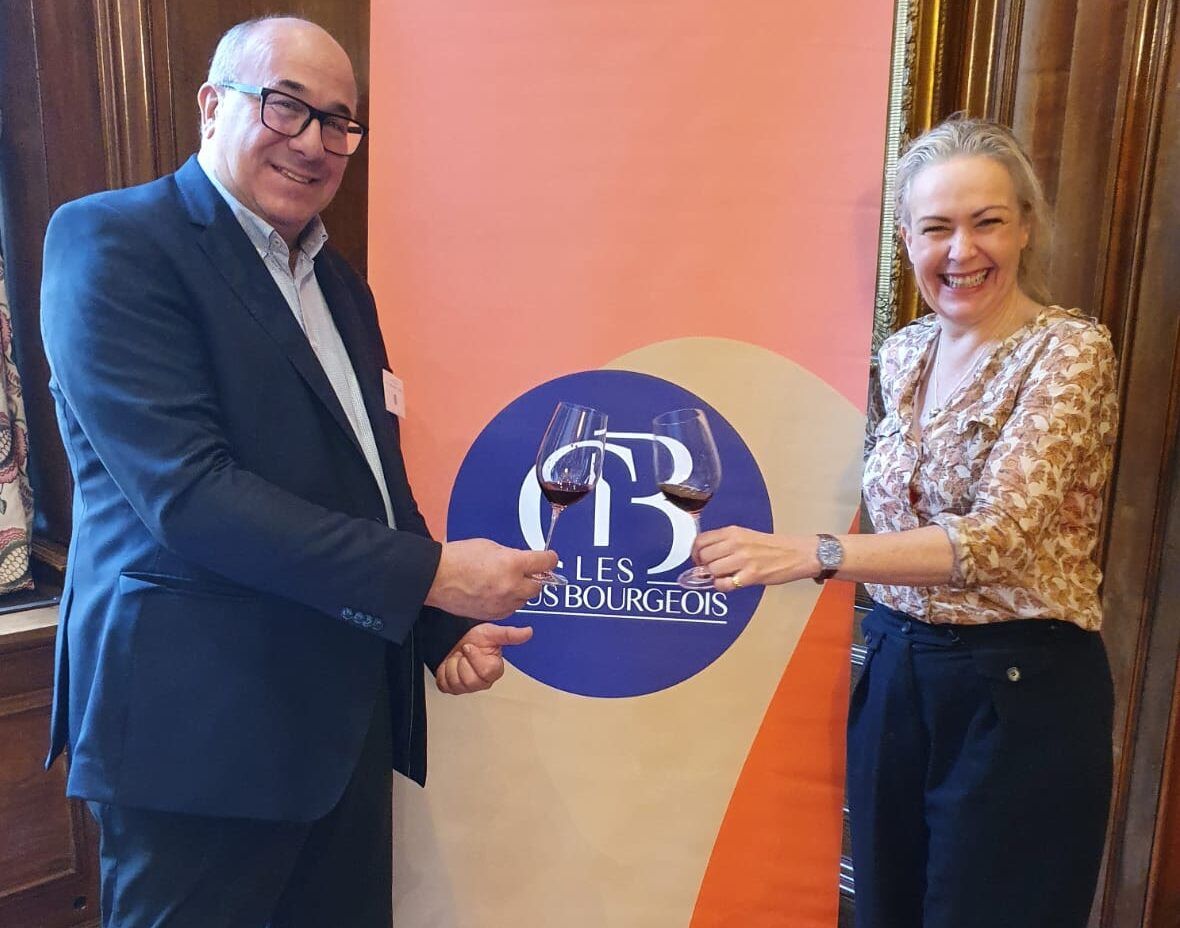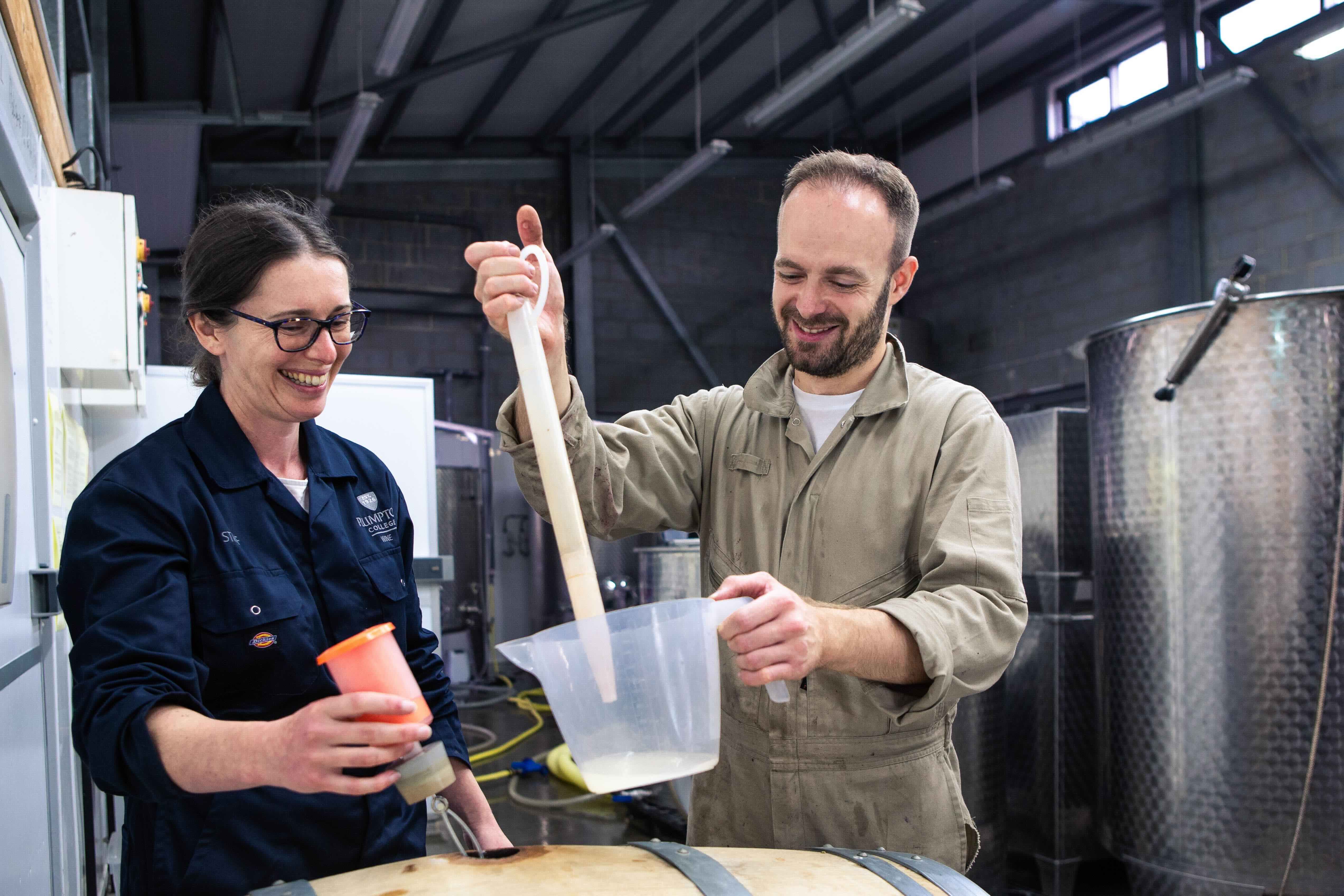“The new Classification gives the customer increased confidence and our members the capacity to manage quality. Also, every five years we put our heads on the guillotine if we want to keep the classification showing great value, quality and price,” says Bijon.

“Putting the new system to the test, we tasted wines from three years – 2019, 2020, 2021,” writes Sharples
“We are not born Cru Bourgeois, we become Cru Bourgeois” Franck Bijon passionately informed me at the recent Cru Bourgeois 2020 Classification tasting in London. Appointed president of the Alliance of the Crus Bourgeois du Médoc in 2016, Bijon has been closely involved with the recent, and significant, changes to the classification system in the Médoc.
In fact, it would seem there has been something in the air for several classic wine regions over these past few years; with new classifications in Chianti Classico (Gran Selezione) changes in Rioja (a focus on village wines and single vineyards), and now in Médoc.
The trials and tribulations of the Cru Bourgeois classification
If a soap opera was ever to be likened to a wine region, then the Médoc must come close! The original Cru Bourgeois classification had no legal bearing and has only been used as a reference point since 1932 for the châteaux that were not part of the 1855 classification – i.e. these were the properties that had been owned not by the aristocracy but by the middle class bourgeoisie, the residents of the town or burgh of Bordeaux.
The Alliance des Crus Bourgeois du Médoc was established in 1962 and the European Community labelling regulations approved Cru Bourgeois in 1979. It was not until June 2003, that the first official classification established three quality levels: Cru Bourgeois, Cru Bourgeois Superieurs and Cru Bourgeois Exceptionnels. However, there was a dramatic development; only four years later, the Bordeaux Administrative Court of Appeal ruled the new classification null and void. The Court found significant conflicts of interest within the jury and banned the use of the term Cru Bourgeois.
Suddenly winegrowers and producers alike found themselves without an identity having been banned from using Cru Bourgeois! However, the Association and its members mobilised quickly to establish a quality assurance procedure, which was approved by public authorities and the designation was saved. But this time, in 2010, the revision and resurrection of Cru Bourgeois was democratised to one level only with the classification being assessed annually. While quality standards were established, the lack of continuity and potential for change from year to year created uncertainty for the producers, their importers, and more importantly the consumer.

The QR code, found on every Cru Bourgeois bottle
Cru Bourgeois 2020: a re-set for the region
In contrast, the Cru Bourgeois 2020 classification is a re-set for the region. It emphasises quality, value, sustainability, and a strong ethos of cooperation between the 250 members. In addition, it provides the consumer with a clear message as to quality. Lasting five years (rather than merely one), the 2020 Classification provides a far more considered, robust and long term means for wineries to plan. It also applies to the château, rather than the wine. Furthermore and, perhaps most importantly, it reintroduces the three-level quality hierarchy and establishes a specific audit plan that is externally and scrupulously monitored. These changes were created as a yardstick for both quality and value. In fact, 78% of members were in favour of the new classification, which demonstrates a strong ethos of working together for the greater good of the region and its success across the globe.
There are five pillars to the 2020 Cru Bourgeois Classification:
- the quality of the wine (five vintages are tasted blind – for the 2020 any 5 vintages from 2008-2016 and in the next classification launched in 2025, the same vintages will be tasted blind across all producers)
- environmentally sustainable and responsible practices with the minimum requirement of producers obtaining, or at least in the process, of obtaining level two of the Haute Valeur Environmentale certification (HEV covers four key areas: biodiversity conservation, plant protection strategy, management of fertiliser use and management of water.)
- an authentication sticker with a QR code on every bottle – which provides a basic guarantee along with a profile about each winery – including varietals, soil, tasting notes as well as wine tourism activities
- additional criteria are assessed for the higher Cru Bourgeois Superieur and Cru Bourgeois Exceptionnel categories, giving specific consideration to the technical management from the vineyard through to the bottle along with marketing and promotion of the property’s wines.
This classification is not limited to the quality of the wine, rather it considers an overall, more holistic, assessment of the chateaux such as the presence and quality of a cellar door, the marketing and distribution channels, as well as sustainability and responsible wine growing activities. In addition, there is a particular emphasis towards creating better understanding and consumer confidence. Bijon emphasises the importance of demand being driven from the consumer upwards; and much of the Associations’ promotional activities focus on B2C. The goal? The customer demands Cru Bourgeois as their drink of choice.
Insightfully and with blazing honesty, Bijon indicated they are not looking to produce the best wine in the world but rather that Cru Bourgeois is one of the best value in the market; particularly in mature markets e.g. UK, US. He believes within a couple of years, China too will reach the same conclusion. “Entry level wines are dead, but this part of the market is growing (UK retail £15-25). And for the future – we need to be able to effectively communicate the reason why… in a difficult market, it is paramount that we can communicate the value, terroir, authenticity, the social, tourism, and environment.”
Bijon’s enthusiasm and the Association’s approach offers a compelling approach to protecting their region as well as the region’s future on the world wine stage. Putting the new system to the test, we tasted wines from three years – 2019, 2020, 2021 – which all showed immediate drinkability, as well as some with good ageing potential. The wines hit the mark; great value, character and quality – just what the new classification is striving for.
Of the three vintages the wines from 2020 showed the best with bright fruits, freshness and excellent concentration. The 2019’s tasted a bit more closed but still had an approachability rarely seen in young Bordeaux. The 2021’s reflected slightly trickier growing conditions and their youthfulness.
As Franck Bijon notes: “The new Classification gives the customer increased confidence and our members the capacity to manage quality. Also, every five years we put our heads on the guillotine if we want to keep the classification showing great value, quality and price.”
Cru Bourgeois 2025
Next year brings in the next phase – the second of the five-year classifications which will be launched in early 2025 based on assessment of wines from 2017 through to 2022. With the average quality continuing to improve in every area this is an exciting time for consumers and growers alike. The dedication and commitment for quality and value, along with a recently created Wine Route in the Medoc of 50 winery cellar doors, indicates a determination to show their strong identity. Bijon’s comment about “Collective group showing the value of Cru Bourgeois around the world” really shows just how focused and determined the Association is to spread the word.









































